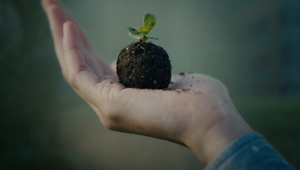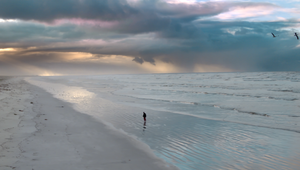
Can't Get on Set Yet? Go All-In with Stock Footage

With productions halted and scaled down in the Covid-era, stock footage is really our most accessible form of high-end or cinematic footage until we are able to get back on set. We’ve been using stock footage for years – mostly as a resource of luxury for getting that perfect establishing or fill-in shot, or as a budget alternative to live-action shoots; but crafting story-driven content from scratch with stock footage is a different beast all together. I was reminded of this working on a recent passion project called 'In the Time of Pandemic', which was based on a poem that went viral by Kitty O’Meara. It got me thinking about how my agency and brand clients are navigating the new-ish norm of stock footage and how creating content with it is more of a shift, than a step down. In fact, creative opportunities abound using stock footage. Here are my insights on the challenges of stock footage and how to get the most out of it.
Anyone can create content with stock footage. We need to create content that stands out in a way that is true to the brand.
When everyone is operating on the same playing field, your creative choices matter even more. Creating content using stock footage is a great exercise in rethinking and even refocusing the messaging and tone of your brand. On top of that, motion graphics artists and Flame artists can easily manipulate stock footage shots to reinforce your brand. Explore colours, graphics, and transitional elements that add visual interest while complementing the brand in a recognisable way.
We have a great concept that could work with stock footage, but can't find the shots we need.
Embrace the limitations – and shake up the conventions of storytelling in advertising while you're at it. By being flexible, your original idea could even evolve for the better. This means accepting that your original storyboarded scene may not be the ultimate choice. And that’s okay. For instance, let’s say your concept requires a beach scene, but none of the stock shots seem to work. Don’t just settle for any beach scene. It might just be that a forest scene works better for the concept in some magical way. Or maybe it’s something as simple as a crop to get the look you want. While stock footage rarely offers multiple scenes, newer footage comes in 4K, which means you can zoom in for a tighter shot that relates to the wider shot. Dig deep and find these moments using stock footage. Ultimately, by embracing the restrictions – and even challenging the ideas we are most married to in the process - the great creative finds a way of surfacing. It’s something we need to remind ourselves of even when we’re back on set with all the bells and whistles of high-end productions.
I found some shots that work for my new concept, but they still lack visual continuity.
Cliché but true, a picture is worth a thousand words – especially in filmmaking. But behind those words is a feeling. When you're dealing with aesthetically disjointed stock footage, the holy grail is establishing visual continuity through the emotions you discover in the source imagery. This means less show-and-tell, and more conceptual storytelling. Advertising suffers when we shout and try to say too much with busy call-to-action graphics and voiceovers. Sometimes, the quiet of the moment is just as effective. Some of the most powerful ads rely on a strong visual narrative and music, with words used sparingly. Incidentally, it’s a style you see more in European advertising, but I believe American viewers would be receptive to it.
Preserving the creative integrity of a stock footage spot without a director and the traditional concept-to-storyboard-to-execution model.
Embrace the collaborative process and empower post-production professionals to apply their expertise on the frontlines of the storytelling process. While stock footage content presents a completely different workflow, editors, colourists, sound designers, and musicians all have a hand in elevating the final product. In these times, a great editor can be your greatest ally. We editors are attuned to telling stories from the visual viewpoint, and finding the little moments. In many ways, we become writers in our own right in the filmmaking process because we’re always looking for the story within the story. Stock footage projects might shake up the collaborative paradigm you are used to, but we can bring a strong creative leadership to these kinds of projects when needed.
In conclusion, creating content with stock footage isn't just about adapting to the Covid-era. It can be a practice of better understanding your brand, your clients, what you want to say, and how you want to say it. There are many ways to tell a story, so for now, embrace the medium.
Peter Mostert is an editor at Hooligan












